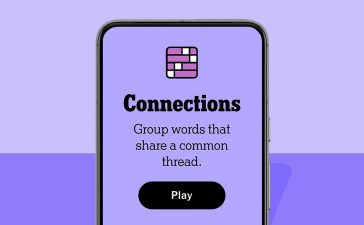No one is denying that fitness trackers and smartwatches can be helpful tools for building healthy habits. However, if you’re not careful, they can also become a major source of anxiety.
You might be inclined to think that wearable-induced anxiety is something that happens to other people. However, it’s surprisingly easy to fall into toxic wearable habits. I’m a wearables reviewer, and although I should know better, even I have had to grapple with anxiety-inducing fitness tracking habits. A couple of years ago, I got so caught up chasing running streaks that I ignored body signals telling me to ease up. It landed me with a nasty case of shin splints. Not only was I unable to run for nearly eight weeks, but it also meant missing a 10K race I’d been looking forward to. Afterward, it forced me to reexamine the role these devices played in my life and my fitness goals.
Fitness trackers don’t have to be a source of anxiety. Here are some easy steps I’ve learned over the years to ensure they are working for you and not the other way around.
Set small, easy goals
Changing anything about your life requires a massive amount of energy. The bigger the change, the more energy you need to overcome the comfy inertia of your existing habits. Multiply that by 1,000 if you’re trying to build an exercise routine for the first time as an adult. This is why you should always start small. I mean, really small. Write down whatever you think is small, and then go even smaller.
For instance, a popular goal is to walk 10,000 steps every day. Despite not having much scientific backing, the 10,000-step goal is so ingrained in our psyche that many fitness trackers use it as the default during setup. But unless you’re already close to walking that every day (aka, 9,000 to 9,500 steps), it’s highly unlikely you’ll be able to meet that goal consistently.
For me, a 5-foot-3 woman, 10,000 steps is around 4.5 to 5 miles. At my usual walking speed, we’re talking anywhere from 70–80 minutes a day. Most busy adults can’t suddenly go from walking 20 minutes a day to over an hour daily and maintain that momentum. By setting big goals that widely differ from your current habits, you’re setting yourself up for anxiety and failure.
Ignore any default or automatic goal settings on a smartwatch or fitness tracker
The better move is to ignore any default or automatic goal settings on a smartwatch or fitness tracker. Some devices are less ambitious in their suggestions, but even the smartest gadget doesn’t know your life. (Case in point: my Apple Watch chided me to get in a brisk 27-minute walk when I was bedridden with covid.) You should always be the one to set your goals, and you should always set initial goals that are only a smidge harder than what you’re currently doing.
If you really want to be a person who gets in 10,000 steps daily, a smarter move would be to first wear a tracker for a week and see what your natural step count is. Even if that number is far off from 10,000, only add 300–500 steps. When you can hit that number consistently for a week or two, add another 300–500 steps. Repeat that until you get to 10,000. Thus, instead of feeling discouraged when you inevitably mess up, you’ll have racked up enough wins to make quitting less likely if you have a bad day or two.
This is just one example, but you can apply it to almost any metric that your wearable tracks.
Bottom line: tell your smartwatch or fitness tracker’s default goals to get lost. Start with goals that require the least amount of effort and build from there.
Deprioritize streaks and challenges
Many smartwatches, trackers, and exercise apps are guilty of glorifying streaks and challenges that pit you against friends on the same platform. It’s a well-intentioned mechanism to gamify fitness and encourage consistency via a visual cue. But when you set out on your fitness and health journey, was winning digital badges for long streaks or challenges your main goal? Probably not.
Streaks and challenges are feedback tools that are meant to help you on days when your motivation is low or even nonexistent. But if you’re a competitive person, you run the risk of getting in too deep. Unlike with other types of habits, when you exercise, you run the risk of injury — and even the healthiest people get sick. In the long run, taking one or two days off your streak and thereby preventing injury — or taking the time you need to recover from an illness — is more likely to keep you on track than getting sidelined for weeks (or even months) because you hurt yourself.
Ask yourself three things. Am I feeling good physically but need extra motivation today? Am I rearranging or deprioritizing other important areas of my life to maintain this streak? Will maintaining this streak put me at a higher risk of sickness or injury?
If you answer yes to the first, then go for it, especially if you’re at the beginning of building a new exercise routine. But if you answer yes to the last two questions, it’s worth reminding yourself what your big-picture goal is.
This isn’t a problem that will impact everyone. But if you get too obsessed with streaks, there’s an easy way to reset. Rearrange the layout of your smartwatch or tracker’s widgets, watch faces, or companion app layout to deemphasize streaks and badges. In apps, try to hide them completely if possible. For example, in the Garmin Connect app, I’ve rearranged the tabs to hide the Challenges menu. Instead, I’ve chosen to emphasize my Garmin Coach plan. My goal is to run a faster time in an upcoming half marathon, and it’s easier to focus on that when it’s visually front and center.
Life happens. You’ll inevitably break a streak because you forget a charger or there’s a family emergency. If you embrace that, it’ll be easier to see streaks as merely a feedback tool that tells you if a particular goal is at the appropriate level or needs an adjustment.
Refocus when injured, ill, or going through difficult times
Unless you’re superhuman, you’ll eventually get sick or injured. Everyone also goes through hard times that can’t be dealt with through willpower alone. During those moments, you will lose progress or may have to put goals on hold. It stinks, and there’s no way around it, so go easy on yourself. This is a good time to explore other health-tracking features.
If you’re ill or severely injured, focus on sleep tracking instead. Several smartwatches and fitness trackers allow you to set sleep goals. Getting plenty of sleep will help you recover faster. If you’ve got the Oura Ring, you can also enable the Recovery Mode, which disables activity goals in favor of rest and sleep quality. Hydration-tracking widgets are a good way to make sure you’re getting enough fluids as well.
If you’re going through a difficult time, set a minimally viable goal. Maybe you were working out for an hour a day but can now only muster enough strength to go on a five-minute walk. Set that as your goal instead. You’ll be safeguarding a little time for yourself and your movement every day. When it comes time to get back into it, you won’t have to start from scratch because you’ve maintained the habit. If your wearable has mindfulness features, try enabling breathing reminders. Taking a break to “breathe” might feel silly at first, but it’s a way to periodically distract yourself from catastrophizing or dwelling on things you can’t change.
Review and reflect
These tips might feel obvious, but toxic habits are easier to spot in others than in your own behaviors. Every month, I review whether my current wearable use aligns with what I’m trying to achieve. Sometimes I’ll do it more frequently if I catch myself falling down a familiar slippery slope. You can choose to review as often as you like, but I recommend a minimum of at least once every three months.
When it’s time to review, I ask myself the following:
- If I forgot my smartwatch or tracker, would I feel upset at “not getting credit”?
If the answer is yes, I’ll deliberately take a day where I don’t wear any sort of tracker. That usually helps recalibrate from an obsessive mindset to a more observational one.
- Am I achieving my daily goals more than 90 percent of the time?
If the answer is yes, it’s time to review the big-picture goal and determine the next step. Maybe it’s making the goal more challenging, or maybe it’s moving on to another goal entirely. On the other hand, if the answer is no, it’s a sign that something is up and I need to readjust my goals to better fit my circumstances.
- How many times am I checking my wrist per day, and why?
This is a good way to check that you’re not falling into an obsessive habit loop. It can also help you review whether you’re spending the right amount of time on your device.
- Are there any notifications or features that trigger anxiety?
If there are, I usually readjust what notifications I receive or disable features that have a negative effect on my mental health. I then make a note to review at a later date and time how it felt to disable those features — and whether I feel the need to turn it back on in a modified way or if I’m happier without it.
These questions are just a place to start. Everyone is different, so feel free to make up your own review criteria. At the end of the day, the most important thing is that tracking anything is a way to measure your progress or figure out a baseline. That’s it. There’s no moral judgment to missing a day, falling short, or failing to progress. All that means is you need to readjust to something that’s challenging but achievable.












